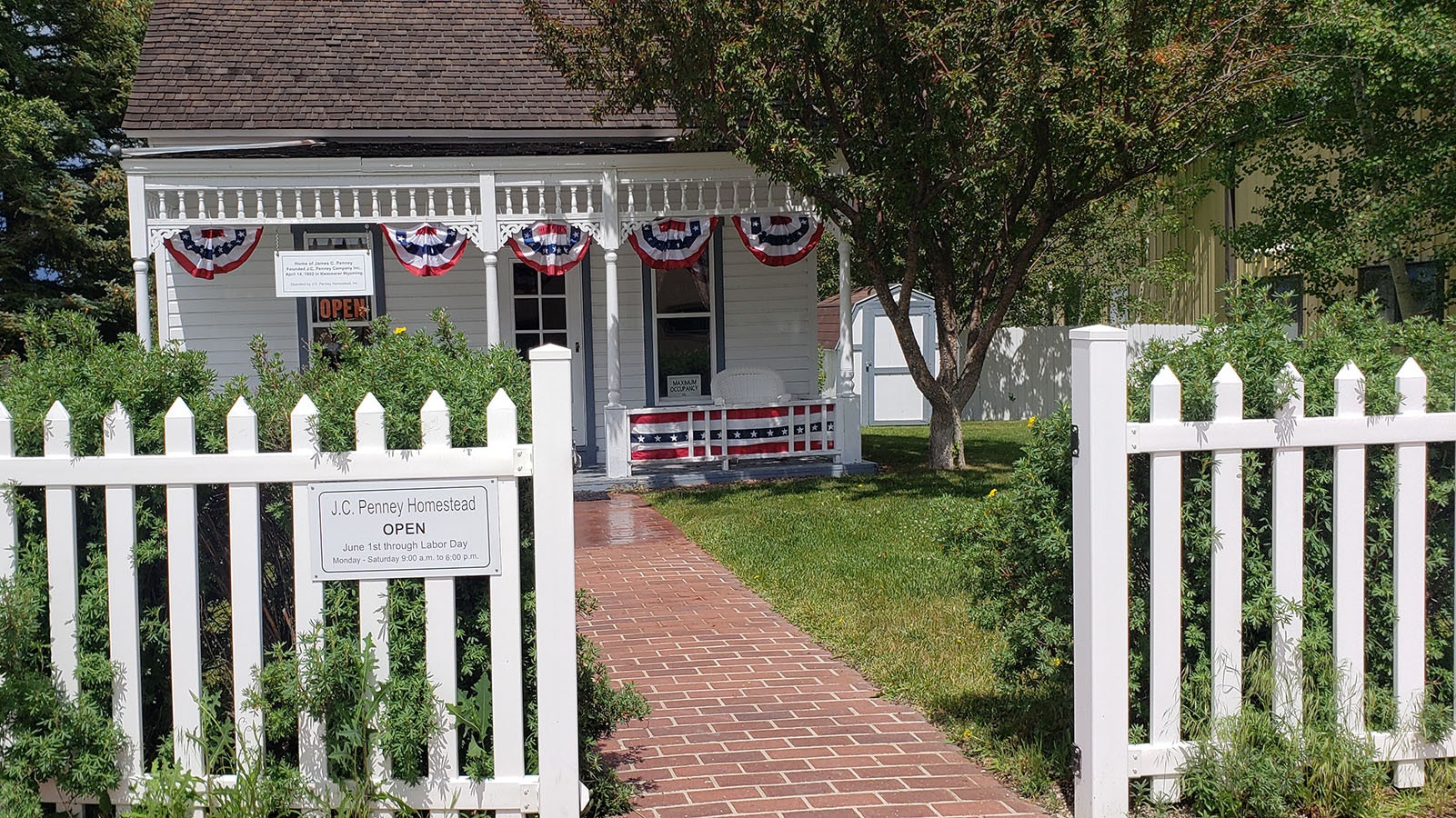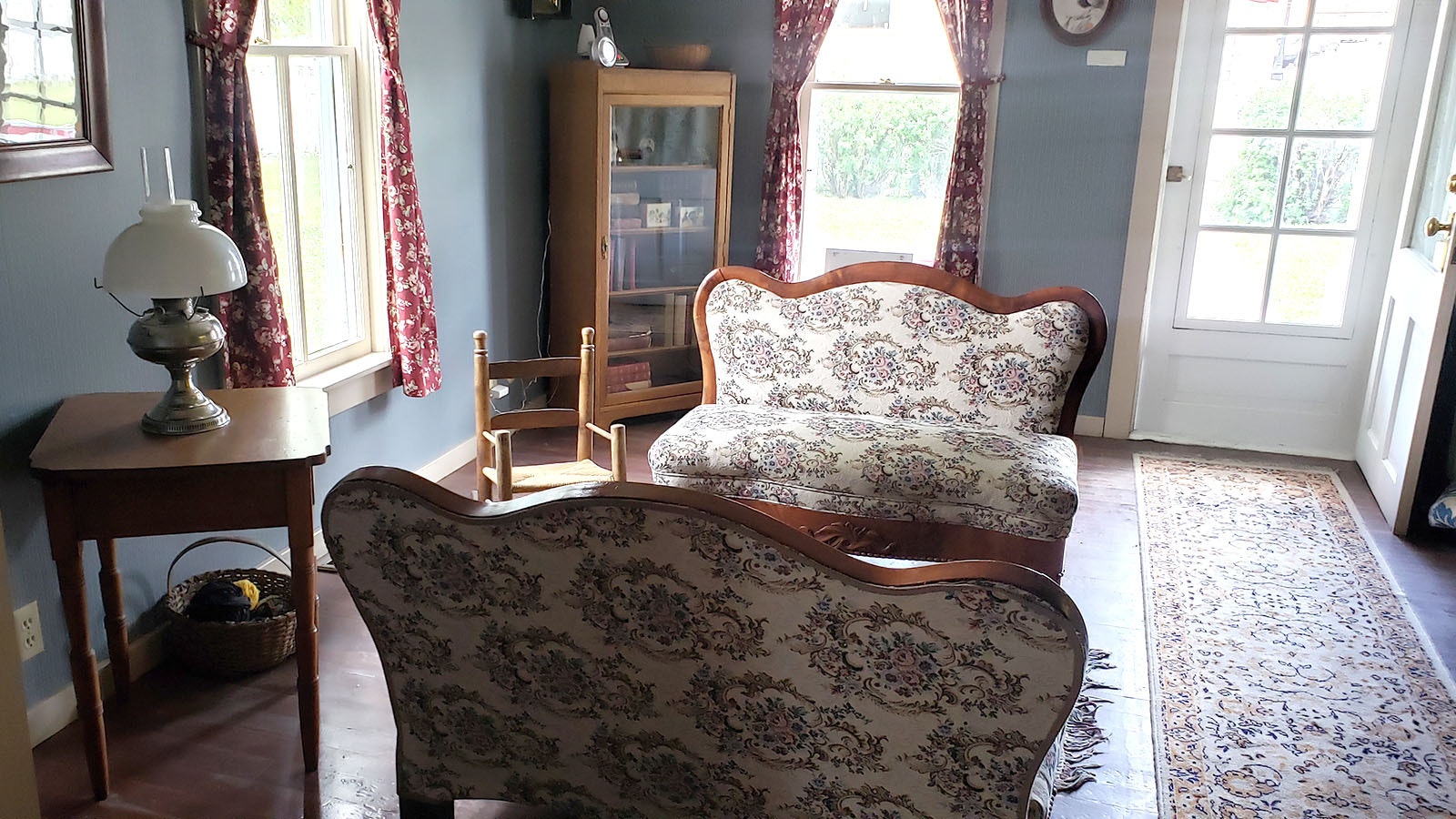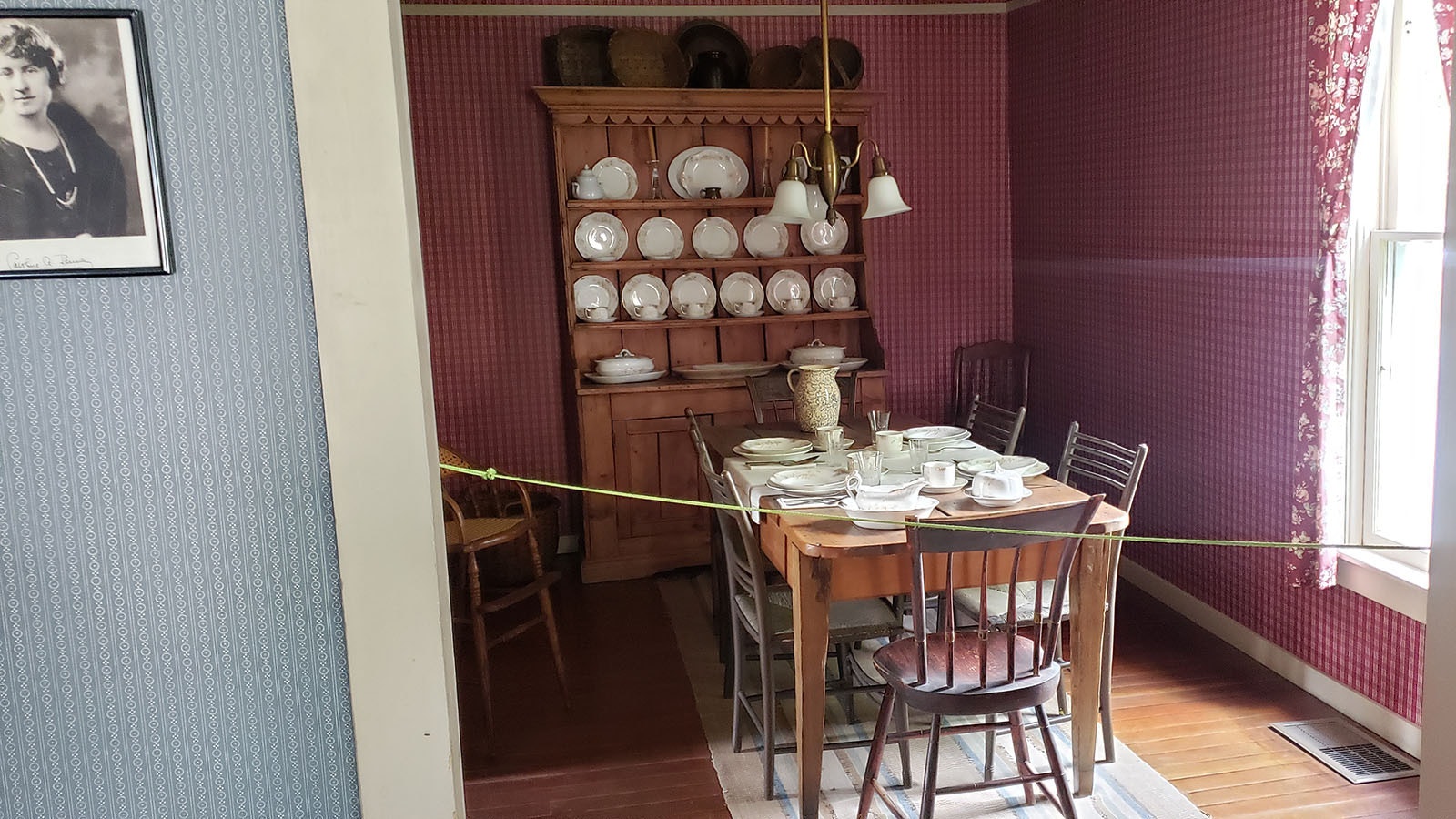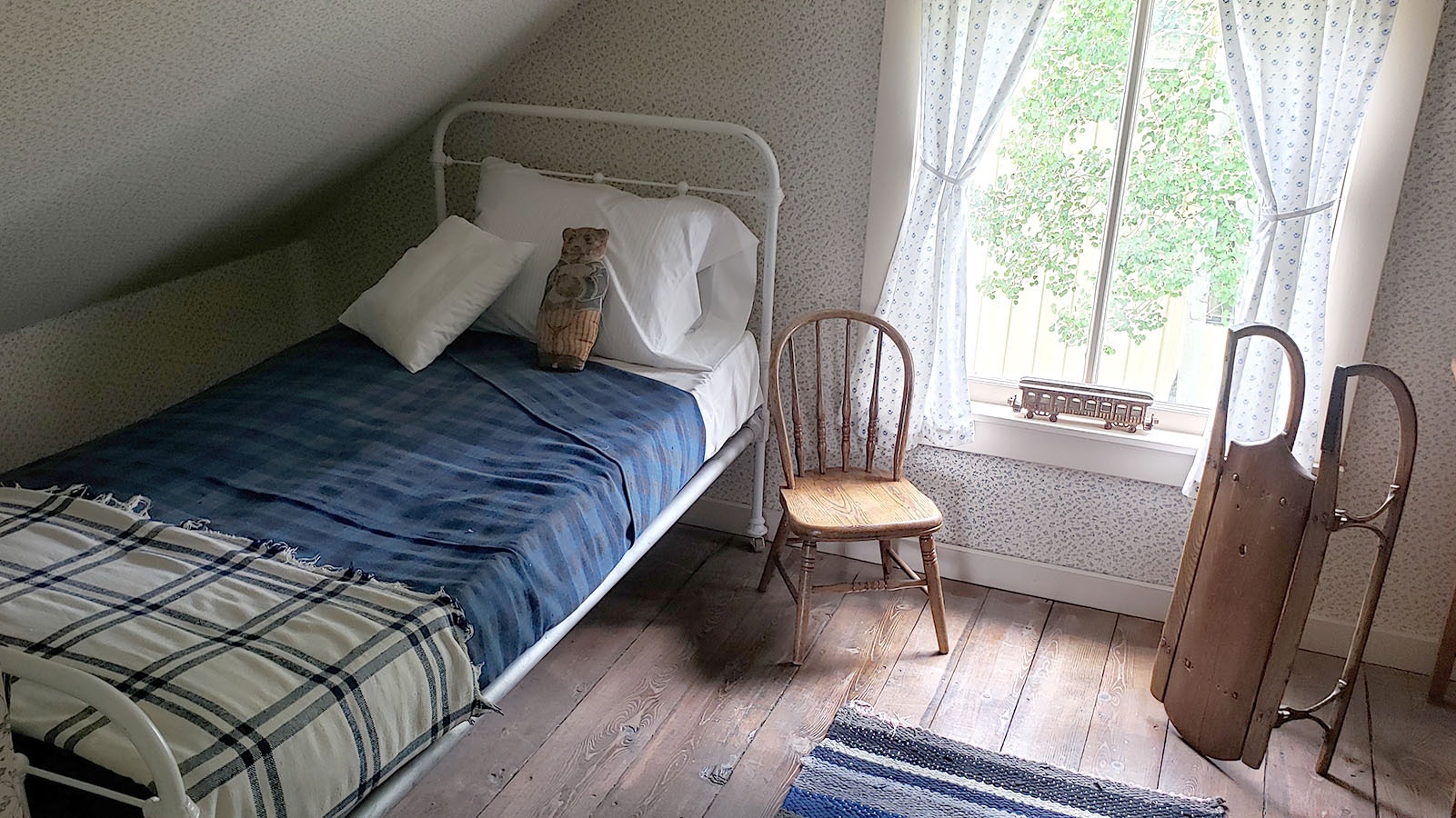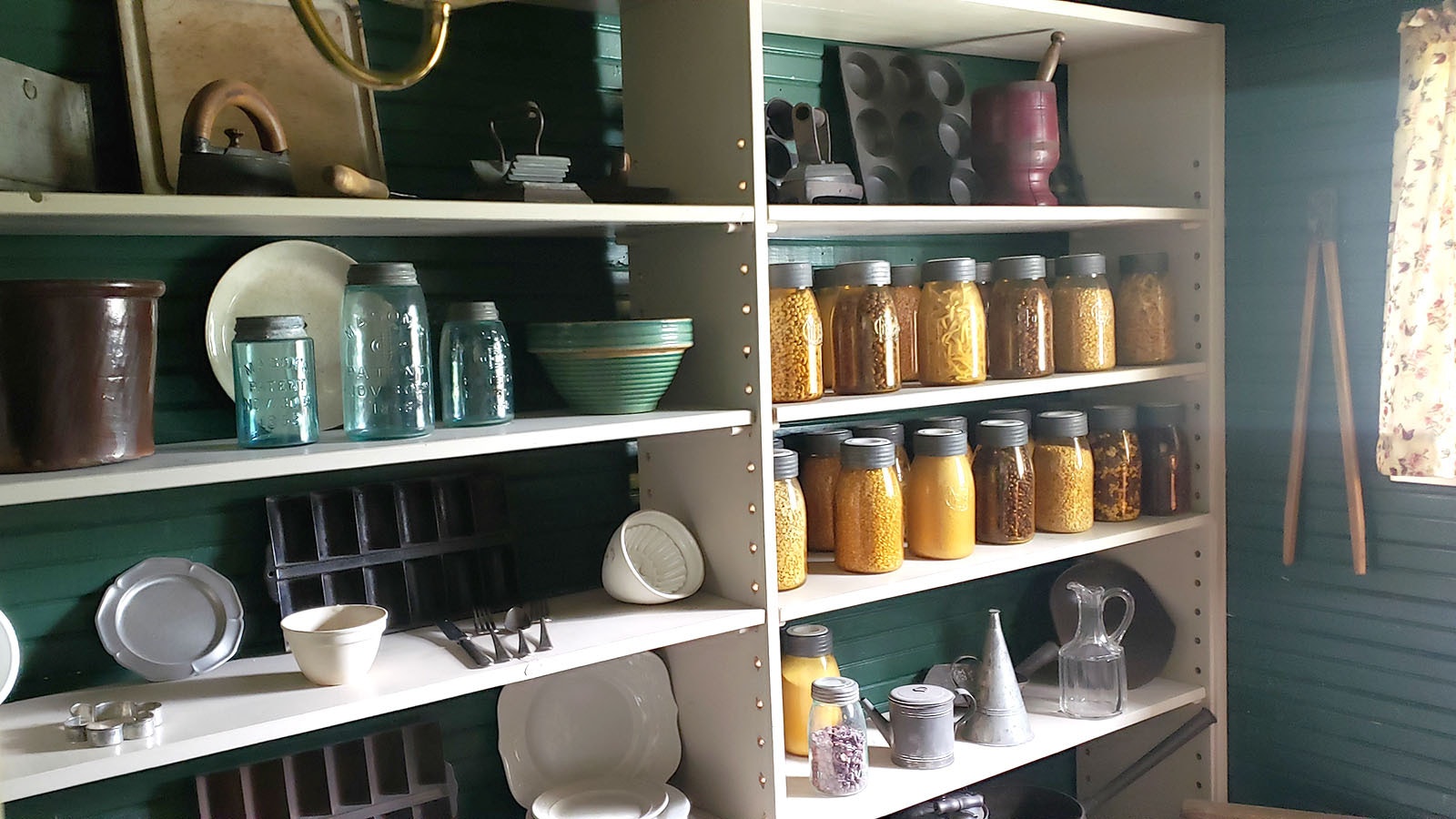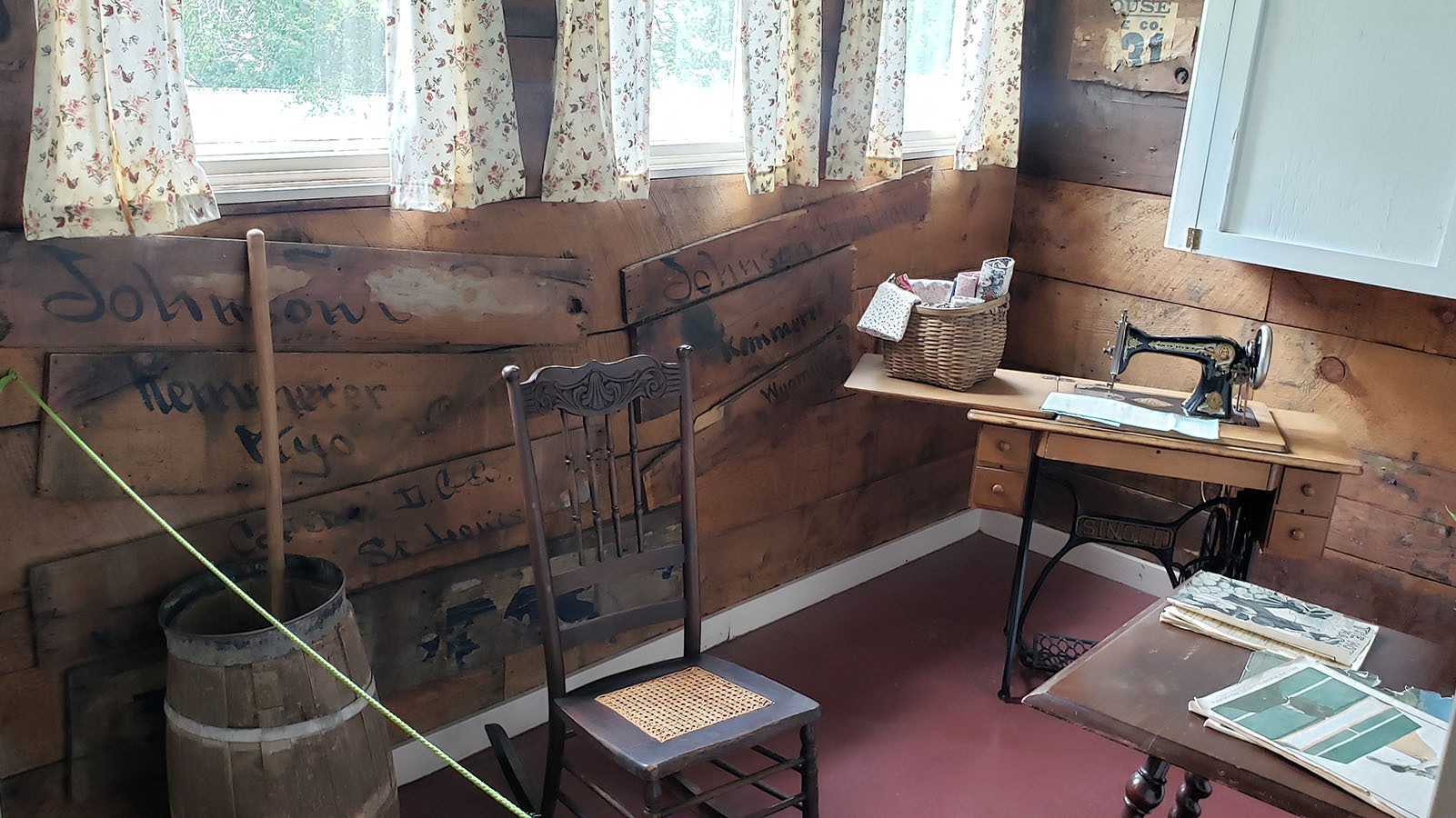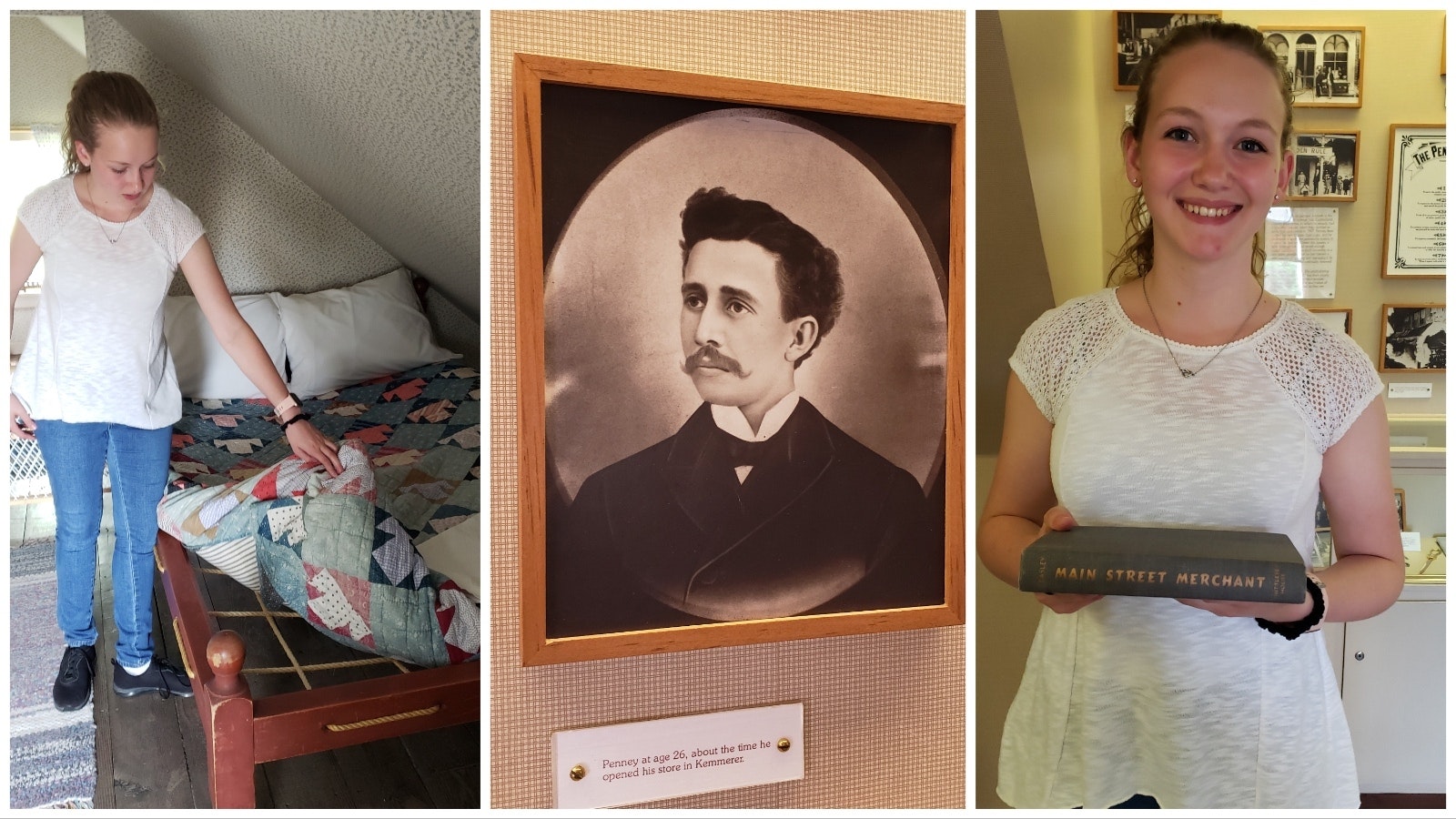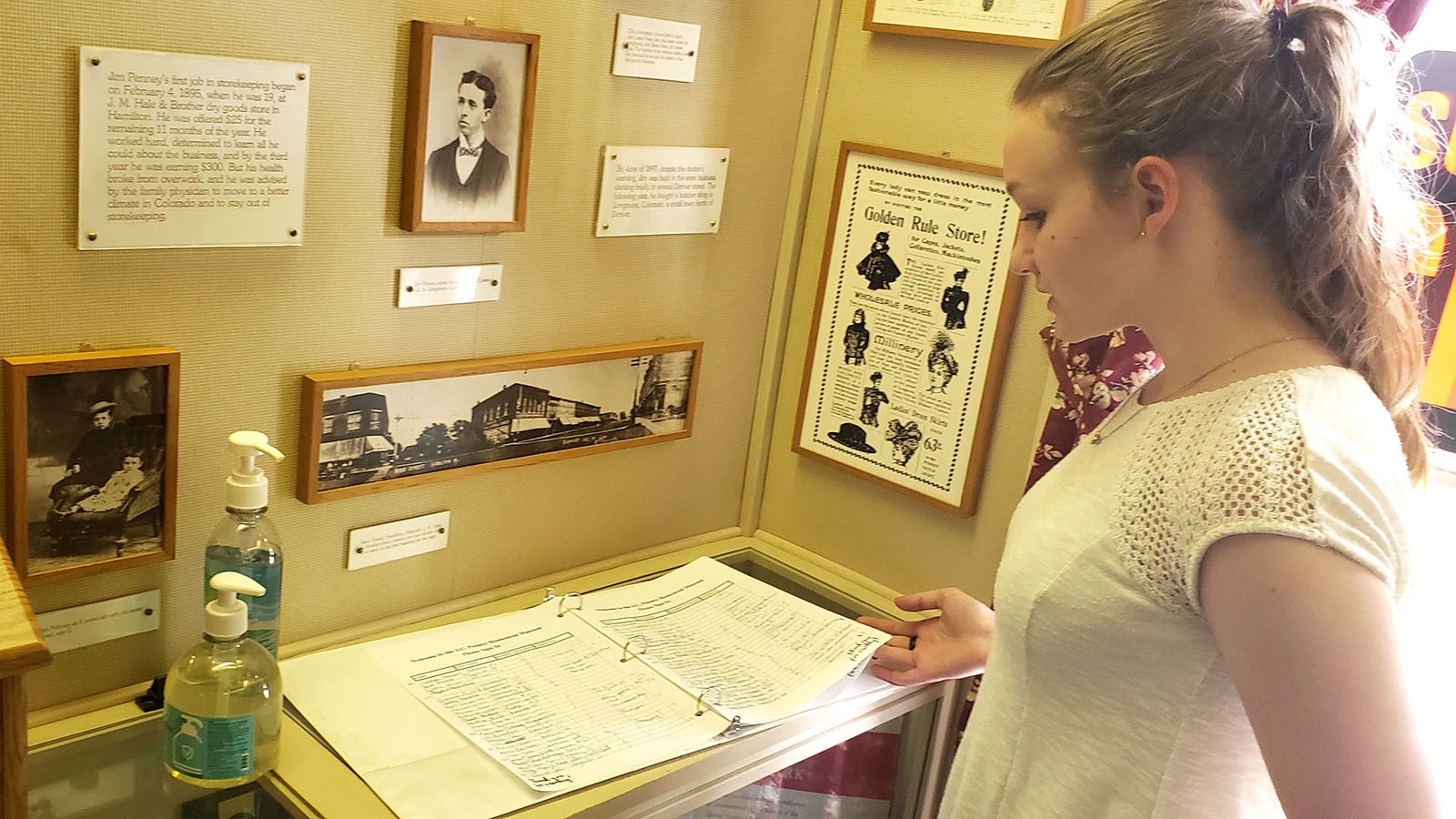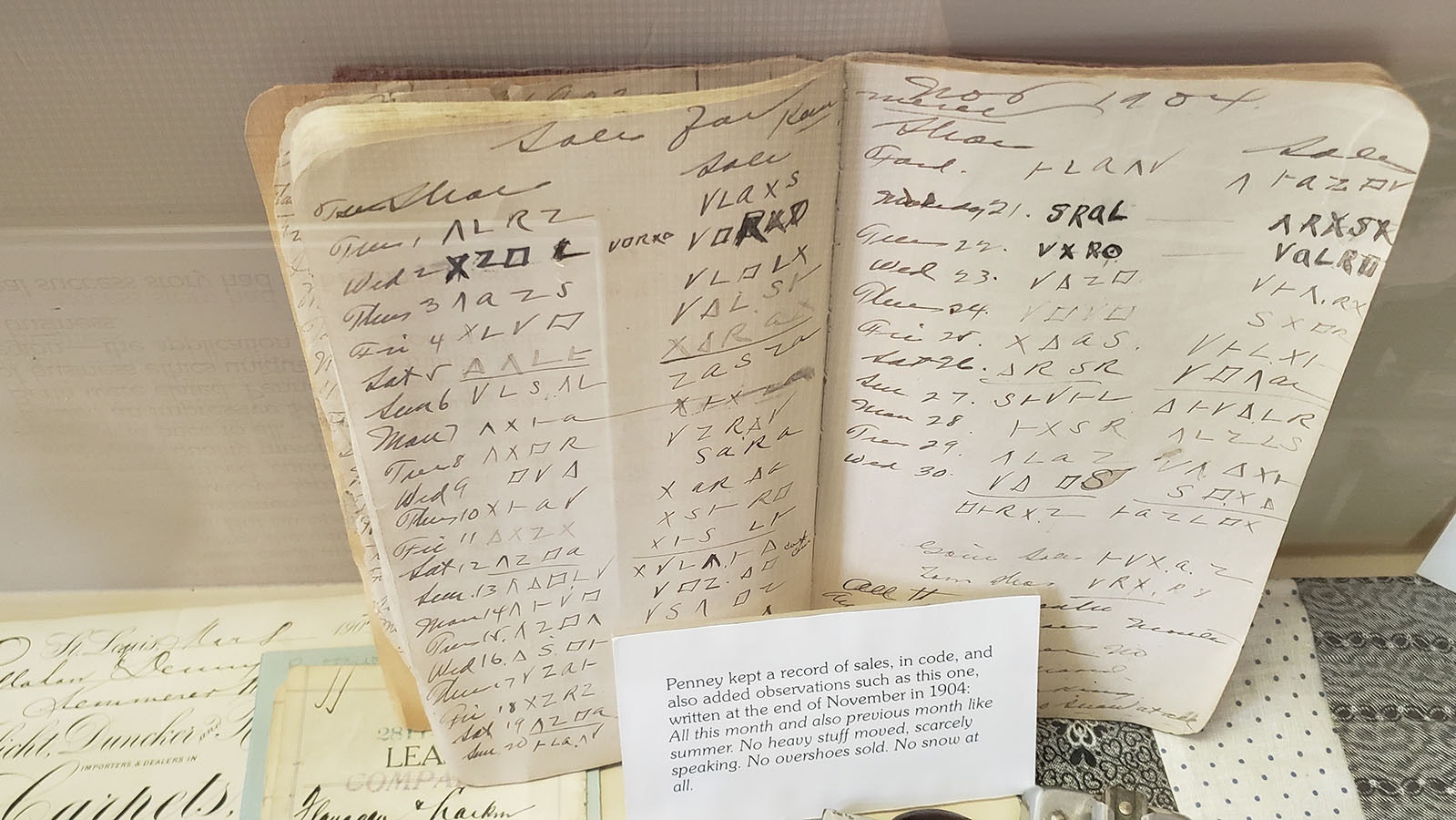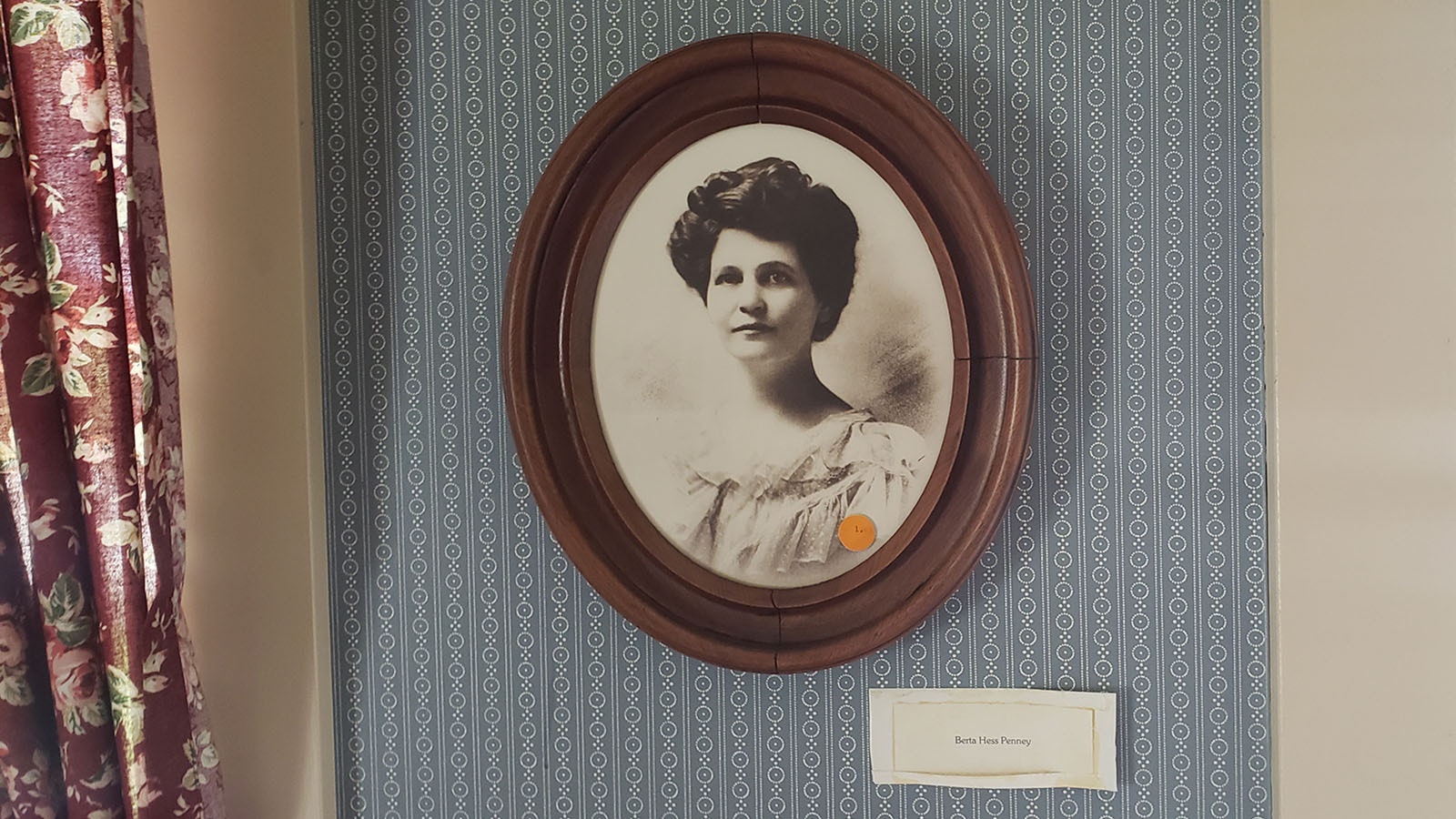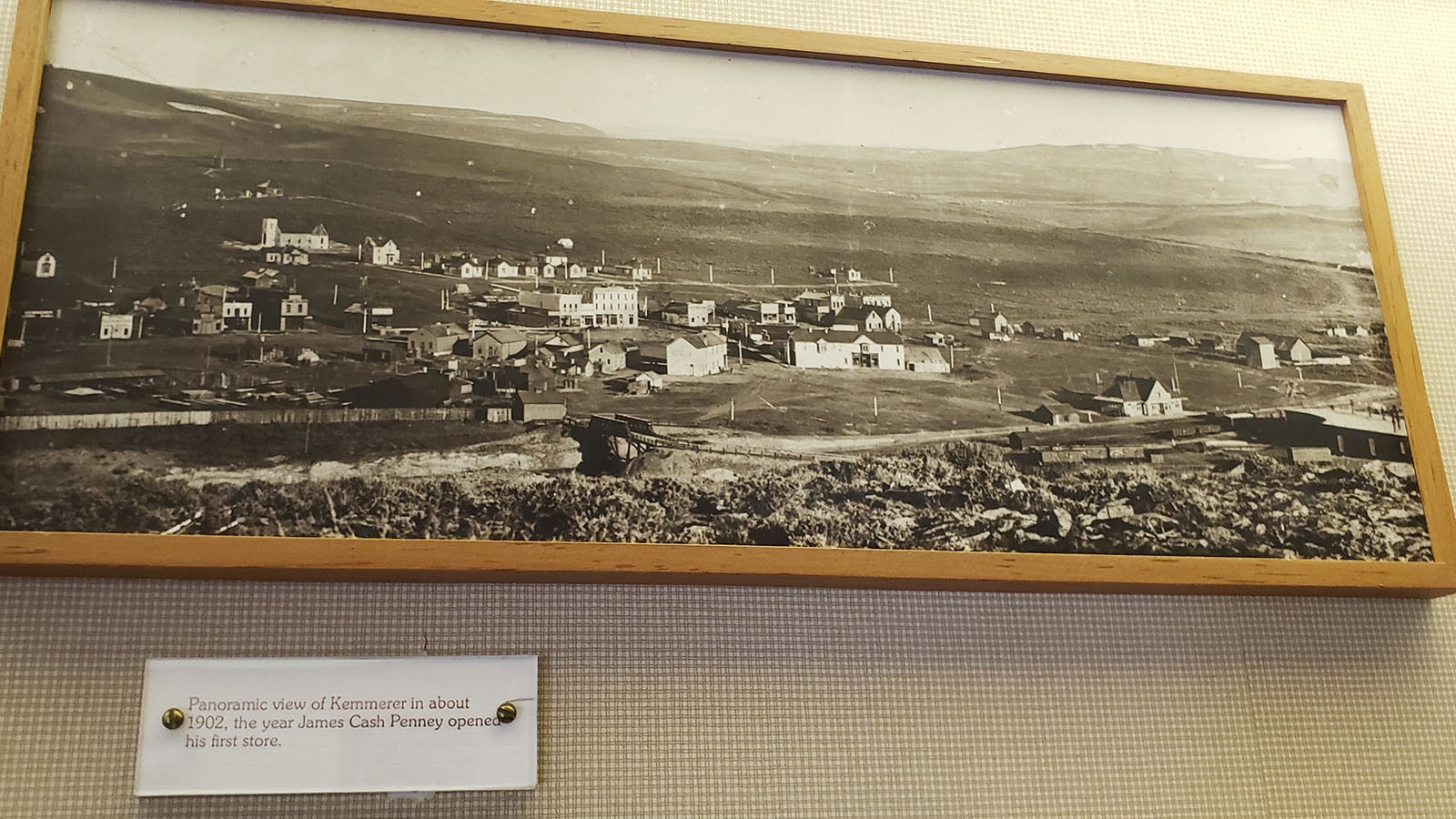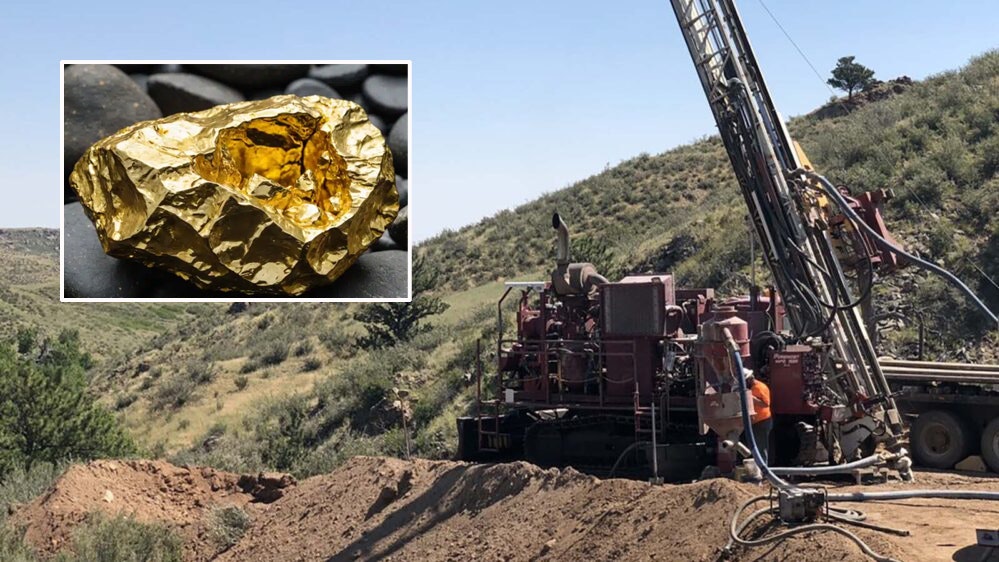KEMMERER — When giving tours to visitors of the James Cash Penney home built in Kemmerer, Wyoming, in 1904, there are two things 17-year-old Janelle Sawaya likes to mention.
The first is a tiny hidey hole in the main upstairs attic bedroom where Penney and his first wife, Berta, slept.
“This is actually where Penney used to keep his money,” Sawaya told Cowboy State Daily.
Penney would often open his store at 7 a.m. weekdays, according to historical accounts, but wouldn’t close until well after the banks had closed up tight for the night.
“His way of thinking was if he could go outside, look both ways down the main road and not see anyone coming, that’s when he was allowed to close up the store,” she said. “Because any person on the streets was a potential customer.”
Of course, by the time there was no one left on the streets, all the banks were closed.
“So, he would take his money here and he would store it under the floorboard,” Sawaya said, gesturing to the tiny hole that could be covered with a matching wooden plank so that it was all but invisible.
The next day, that money was taken to the bank as soon as it opened.
The other thing Sawaya thinks is really cool is the rope bed Penney and his wife slept on.
“After a while, the ropes would start to loosen and fray,” she said. “They would unravel, you know, untwist, and there was actually a key that you would use to tighten the ropes underneath the bed. And that’s where we get our saying, sleep tight.”
This is the second year Sawaya has served as a tour guide for J. C. Penney’s 1904 home. It was restored in the 1980s with the help of historians who looked at paint layers to determine the home’s original color scheme. They reviewed the community’s donations of furniture as well, so they could put something together that would be historically relevant.
The Penneys moved to Salt Lake City in 1909, but the start of the James Cash Penney legend began in Kemmerer.
Late at night, according to historical accounts, Penney would talk to his wife about their dreams for the future. Maybe they would own six stores, he told her once.
Later, he even went so far as to suggest they might own 25 stores.
Humble Beginnings
James Cash Penney is an American icon and legend, but perhaps nowhere is he more beloved than in Kemmerer, Wyoming, where the seeds of all his dreams were first planted with the opening of Penney’s first store, which he called the Golden Rule.
The fact that Penney refused to sell his Kemmerer home during his lifetime, and always took time to visit it when he came to town, are testaments to the importance this small mining town always had to him, throughout his 95 years.
Sawaya is one of the many children in Kemmerer who, year after year, choose to read about Kemmerer’s hometown hero and write book reports retelling a story that epitomizes the American dream, where hard work and good values took Penney to the top.
“I think one of the coolest things about him is that his love for business started at a young age,” Sawaya told Cowboy State Daly. “He was about 9 years old when his father told him he had to start buying his own shoes, his own clothing, everything like that.”
That wasn’t because the family couldn’t afford these things for their son, either. While his father was an unpaid minister who made his living as a farmer, he wanted to teach his son responsibility and the value of hard work.
“The first thing he ever sold was pigs,” Sawaya said. “He started with just one or two in their backyard, and then, slowly over time, it grew to like a dozen pigs.”
Penney obtained feed for these pigs by hauling garbage and garden refuse for neighbors. When that no longer assured the pigs’ good health, he devised a unique approach to get them even better scraps.
“It was like a little thing for kids in his neighborhood to do,” Sawaya said. “He would charge like a nickel per kid, and they’d go out to a back row area and do stick horse races.”
The activity would naturally pull up all kinds of weeds and grass from the back lot, which Penney would then collect to feed his pigs.
But eventually, neighbors started to complain about the noise and the smell of the many pigs Penney was keeping.
That was when Penney got one of his first “Golden Rule” lessons from his dad. Doing unto others as you would have them do unto you meant realizing the neighbors didn’t want to have pigs running around, stinking up their neighborhood. That meant the pigs had to be sold right away, even though they were not ready for market.
“But, it’s still one of those cool things, how early it all started,” Sawaya said.
Watermelons, Red, Ripe, Right Here!
From there, Cash turned to selling watermelons, where there were yet more Golden Rule lessons to be learned.
“He was about my age at the time,” Sawaya said. “He had a small, like acre portion of land on his family farm, which he would take and guard with a shotgun and his dog.”
Once his watermelons were ready, he harvested them all up, just in time for the fair.
“He parked his cart right outside the fairgrounds so he wouldn’t have to pay a booth fee,” Sawaya said.
Things were going really well for Penney. His watermelons were selling out, and it was almost all pure profit, since he hadn’t paid the booth fee.
“But when his parents came along and found him, they yelled at him,” Sawaya said. “Because he was not being fair to the community.”
These were the kinds of incidents that Sawaya believes framed and shaped the mind and soul of a young merchant master in the making.
“A lot of the morals that he used to grow his business, like the Penney ideals that you saw down in the photo room (honor, courage, service, and cooperation)? A lot of those, from my belief, were actually instilled from his parents and those original times when he started selling stuff,” Sawaya said.
Those morals always had Penney taking an extra step, going a further mile. And that’s what ultimately made him a success.
“When he was still in the Golden Rule with his former partners, he would actually take three different swatches of fabric from the clothing and he would take them back to wherever they were staying, and he would actually wash these pieces of cloth to make sure they were good quality,” Sawaya said. “Most people wouldn’t do that.”
Penney Did It His Way
It was Penney’s insistence on doing things his own way that also laid the foundation for his success, and it’s a life lesson Sawaya said she will take with her wherever she goes, whatever she does.
“A lot of the time going through stuff, he would do things that people didn’t think were normal,” Sawaya said. “Because what people thought normal was the quick way of going through things.”
In fact, opening a store in Kemmerer at all is a great example of Penney doing things his way. His partners had wanted him to open a store in Ogden. It was large, and ripe for a store they felt.
But Penney wanted to open the store in Diamondville.
“They’re my kind of people,” he said. “They’re ranchers and miners. We understand each other.”
The compromise location his partners would allow was Kemmerer, a muddy village of 1,000 people sandwiched between two boom towns.
All In On Kemmerer
Penney couldn’t afford the train fare to Kemmerer twice, so he committed wholly to the town, sight unseen.
Penney studied the community well before opening his store. He knew he would be competing with the mining companies, which paid largely in script that could only be used at the company store.
A prominent banker in town warned him at the time that a cash-only store would be a fool’s errand. There just wasn’t enough cash in the area, the banker told him. Three other businesses had already tried and failed to compete with the company store.
Penney listened to the warnings, but he had also listened carefully to the residents of Kemmerer, and understood their needs.
He stocked his store with affordable goods that he knew they needed and wanted. And his outstanding customer service kept them coming back for more.
His first night, receipts totaled $466.59 — almost enough to repay the $500 in lifesavings that he’d put up against the $1,500 note that bought his one-third partnership in the new store.
He was all but an instant success. One can only imagine the conversations with his wife that night in their attic room above the store, where they had just a bed and a stove — the only two items they could afford to purchase.
The rest of their furniture, a table and some shelves, were made from leftover planks of shipping crates — as were the shelves in the store itself.
“It’s impossible for me to adequately express how I feel toward the Kemmerer store,” Penney later wrote in a letter to Pete Schmook, one-time manager of the Kemmerer store. “It was there that I found myself. Every night, I thank God for the opportunity that was given me there. Little did I dream, when I opened the Kemmerer store, that it would someday be known as the ‘Mother Store’ of nearly 1,700 stores bearing my name.”
The rags-to-riches story of a boy from humble beginnings rising to the very top of American industry, building a fortune of millions, still speaks to the heart of Kemmerer residents today — but also draws thousands of tourists every year to hear more about how one man’s American dream came true.
Renée Jean can be reached at renee@cowboystatedaily.com.


